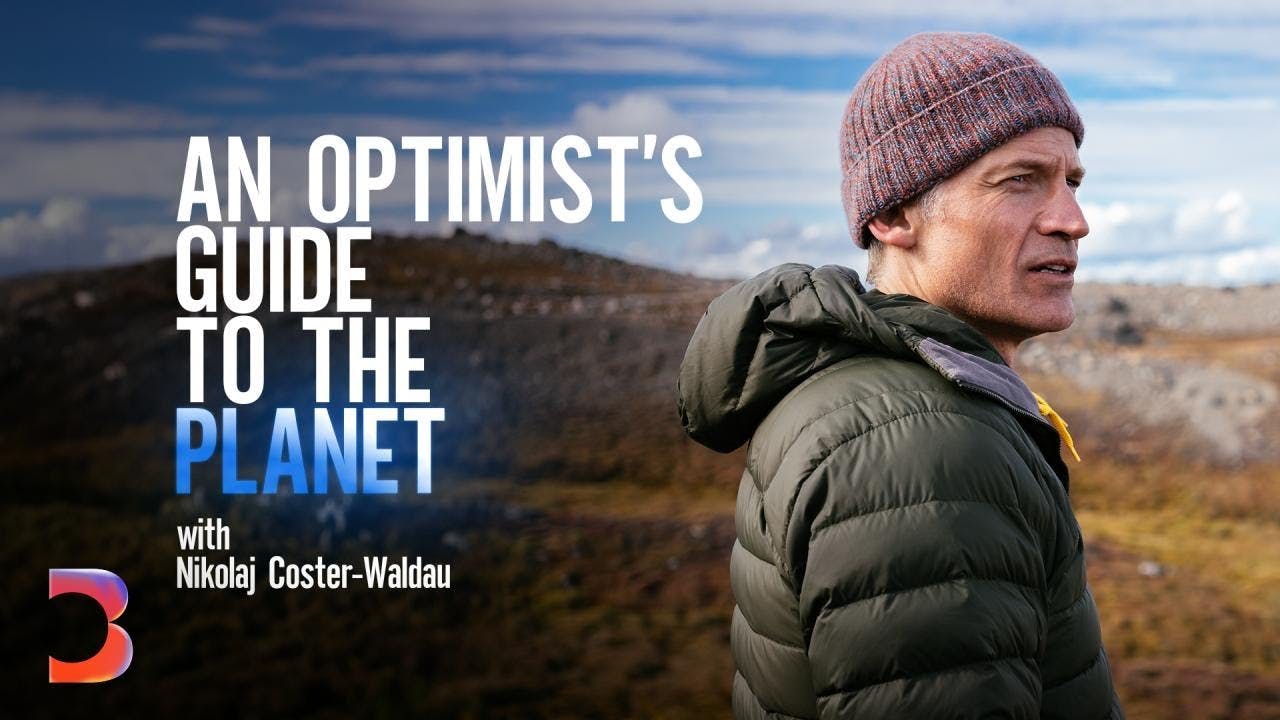Dusk or Dawn | An Optimist’s Guide to the Planet
10 Feb 2024 (almost 2 years ago)

Climate Change Solutions
- Nikolaj Coster-Waldau introduces the show, "An Optimist's Guide to the Planet," which focuses on solutions to climate change and the people behind them.
- The show visits Greenland, where climate change is evident in the melting ice cap.
- Minik Rosing, a Greenland native, explains how the meltwater from the ice cap carries sediment rich in nutrients.
- This sediment, called silt, can be used as a natural fertilizer and carbon capture solution.
- Rosing and his wife, Louise Hand, discuss the potential of silt to improve food security and combat climate change.
- The show highlights the need to overcome practical obstacles to make the use of silt feasible on a large scale.
- Minik Rosing and Nikolaj Coster-Waldau discuss the benefits of using silt as a natural fertilizer in Greenland.
- Silt has been shown to increase crop yields by up to 100% and can help suck CO₂ from the atmosphere.
- Rosing hopes to transport millions of tons of silt from Greenland to other parts of the world to help combat climate change.
- Coster-Waldau visits his family's home in Igaliku, Greenland, and reflects on the changes he has seen in the climate over the years.
- He visits the local school and talks to students about climate change and their hopes for the future.
- Coster-Waldau travels to Australia to learn about how scientists are trying to save the coral reefs, which are threatened by climate change.
- The video discusses the issue of coral bleaching caused by rising sea temperatures and explores potential solutions.
- Coral bleaching occurs when corals lose their symbiotic algae, causing them to turn white and eventually die if the stress persists.
- Marine biologist Daniel Harrison introduces the concept of cloud brightening, a method of creating artificial clouds to shield the water from the sun and reduce coral bleaching.
- Cloud brightening involves spraying seawater into the air to create more cloud condensation nuclei, which leads to the formation of brighter clouds that reflect sunlight.
- The team uses specialized equipment, including air compressors and lasers, to generate and monitor the artificial clouds.
- Ceylena Holloway, a member of the research team, emphasizes the novelty and excitement of being at the forefront of this new scientific endeavor.
- Zoran Ristovski highlights the importance of carefully considering the potential consequences of cloud brightening, such as its impact on rainfall patterns.
- While cloud brightening can provide temporary relief, it is not a long-term solution to climate change. Reducing carbon emissions remains critical.
- The video also explores the concept of creating a fossil fuel substitute by recycling CO₂ from the atmosphere, showcasing the work of the company Twelve in the Bay Area.
- Nikolaj Coster-Waldau visited Twelve, a company that is developing technology to transform CO₂ into useful products.
- Twelve's technology uses a catalyst-coated membrane to break apart CO₂ and recombine it into syngas, which can then be used to make various products such as fuel, materials, and plastics.
- The company's goal is to create a petroleum substitute by pulling carbon out of the atmosphere and turning it into a petroleum substitute.
- Twelve's technology has the potential to be very valuable, and the company is protecting its intellectual property by keeping some of its processes a secret.
- The company's employees are passionate about their work and believe that they are helping to address the climate crisis.
- Twelve has already produced several products using its technology, including polycarbonate molded into the shape of an internal car cover, polyurethane foam, and jet fuel.
- The company is also working on developing a vegan, gluten-free, nut-free chocolate tart using its technology.
- Despite the challenges facing the world, Twelve's employees remain optimistic about the future and believe that their work can make a difference.
Zero-Waste Living
- Kamikatsu, a village in Japan, has become a zero-waste village by implementing a strict waste separation system with 45 different categories.
- Residents of Kamikatsu bring their trash to a central location and separate it by hand, promoting a sense of community and environmental responsibility.
- Nikolaj Coster-Waldau visits Kamikatsu, a town in Japan known for its zero-waste initiatives.
- Momona Otuka, a worker at the town's recycling center, explains the process of separating different types of waste.
- Kana Watando, a resident of Kamikatsu, shows Nikolaj how to disassemble a child car seat to separate its different materials.
- Nikolaj meets Osamu Nakamura, a local artist who lives in a renovated house with minimal electricity usage and gets his water from a nearby stream.